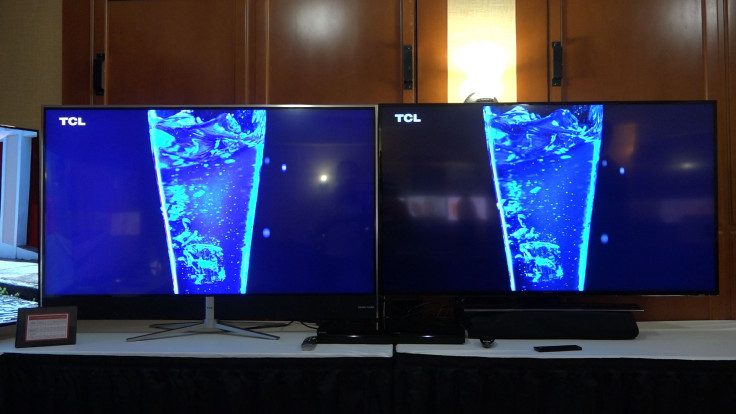Quantum Dots Promise Cheaper 4K TVs, But Are They Really Better Than OLED? [VIDEO]

In recent years, the cutting-edge high-definition television landscape has been dominated by high-quality, highly priced organic light-emitting diode (OLED) sets; if you want the absolute best, you’d have to pay a high price. But what if you could get the same picture quality (or better) for cheaper?
The potential solution is “quantum dots” -- miniscule light-emitting crystals that can produce lifelike color for much less cost than OLEDs. John Ho, the advanced development manager for QD Vision, the company behind the ColorIQ quantum dot tech, explained the system: “Quantum dots are semiconductor nanocrystals, invisible to the naked eye, but they can emit very pure light.”
What this basically means is that there’s greater distinction among color shades; there are more kinds of reds, blues and greens, giving the displays a color range that’s close to the natural limits of the human eye. Pictures are much more heavily saturated than LED displays (both OLED and white light-emitting diode, or WLED, but especially the latter), and though this is technically better, Ho acknowledged that the more intense displays may not suit everyone’s tastes.

Still, despite the extra colors, quantum dots require less energy than high-end OLEDs; there’s “around a 25% efficiency boost” over OLEDs, Ho said.
While a lower cost of living is an advantage for quantum dot displays, it’s not the biggest advantage it has -- a quantum dot television can be built and sold for a fraction of an OLED unit, with similar if not better picture quality even on 4K displays.
These price cuts can help make the next leap in home entertainment -- namely, 4K ultra HD content -- much more accessible to the general public. Although 4K has been touted as the logical leap for content over the past few years, the fact remains that most consumers don’t have displays to support media formatted in that resolution.
Netflix, the king of streaming video services, has begun to offer some easily accessible 4K content, but adoption of 4K displays still remains low. The hardware is just too expensive for most consumers, especially for top-of-the-line OLEDs. South Korean manufacturer LG showed a 65-inch 4K OLED at the 2015 International Consumer Electronics Show in Las Vegas with a base manufacturer's suggested retail price close to $10,000.

QD Vision has already launched a 55-inch 4K TV in China with a Chinese company called TCL for the equivalent of $2,100. While that’s not a direct competitor for LG’s 65-inch unit, the principle remains: quantum dots are much more economical.
TCL hasn’t shipped its products to Western shores yet, but considering the plethora of Chinese manufacturers that attended CES 2015, don’t rule out a Western landing in the future.
So quantum dots sound perfect -- better color range, cheaper manufacturing (and in turn, cheaper prices for consumers), cheaper to power -- but there’s some concern that these quantum dot televisions can’t handle motion blur and content refresh rates the way OLEDs can; OLEDs are still quicker right now. Ho remains confident, however that quantum dots are the way of the future, even if the technology has only just made a real name for itself: “They’re more energy-efficient, better performing and lower cost. It’s hard to make a case for an OLED TV to exist.”
© Copyright IBTimes 2025. All rights reserved.




















